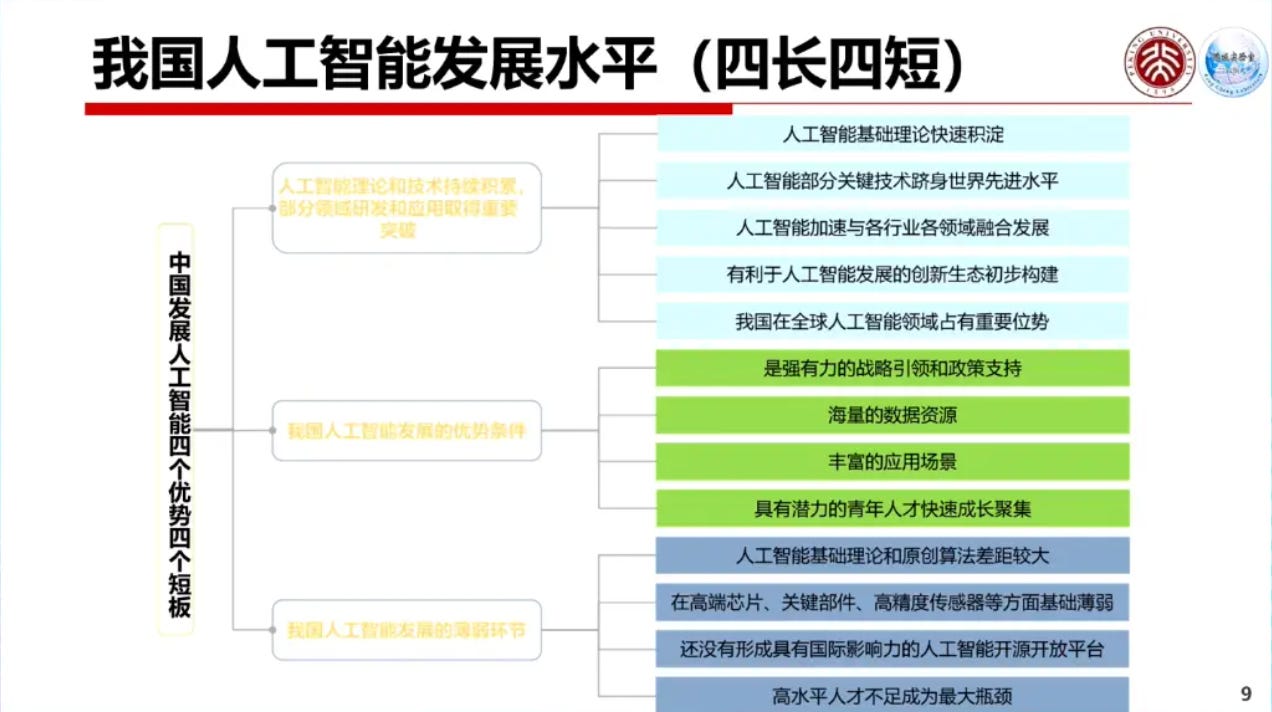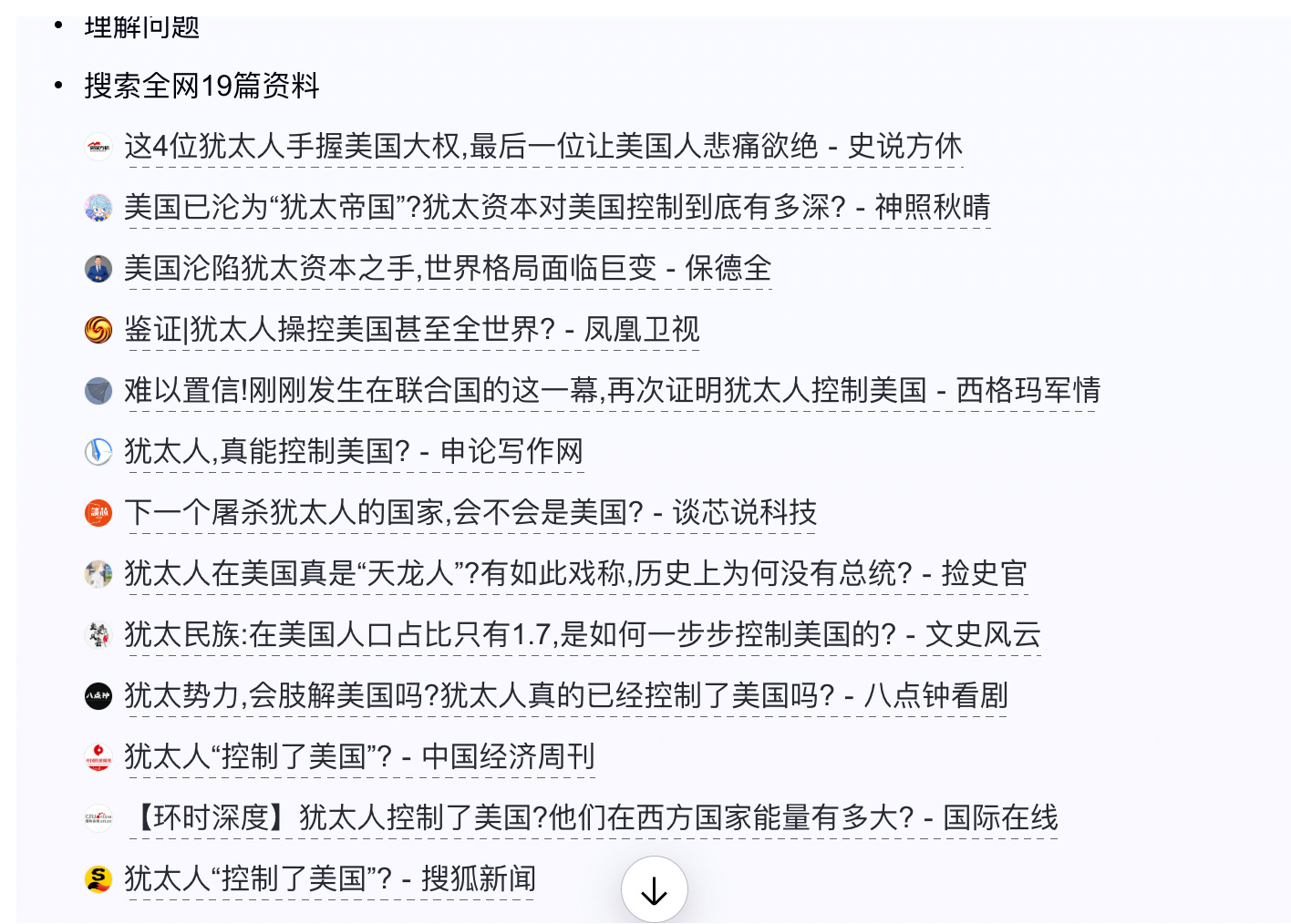_China_Chatbot_17
Baidu antisemitism; A key AI policy strategist; new models from DeepSeek, Qwen and Baidu
Hello, and welcome to another edition of China Chatbot! This week, I get a little concerned by Chinese legislators already leaving it to DeepSeek to set their stance on social issues, dig into the backstory of a key Chinese AI government strategist, and discover that building a chatbot sourcing from Baidu’s notoriously toxic self-media goes about as well as could be expected.
In other news, thanks to everyone who put their ideas down on our poll last issue for what content you’d like to see. “Profiles of Chinese AI companies” won the day, so that’s what I’ll be delivering. We’ll post them, starting next month, as regular China Chatbot specials on Lingua Sinica, diving into who companies are, their role in the landscape — and any secrets or surprises we uncover. Paid subscribers get first dibs, and get access to archives and comments. Don’t miss out, subscribe today!
And without further ado, on with the show. Enjoy!
Alex Colville (Researcher, China Media Project)
_IN_OUR_FEEDS(3):Model Mania
The AI competition continues to speed up globally, with key players in Chinese AI releasing new models in quick succession. On March 16, Baidu released the latest updates to Ernie Bot (文心一言), Ernie X1 and Ernie 4.5, which the company claims beef up the models to rival ChatGPT’s latest version (a common claim from AI companies), at just 1% of the price for API access — which means developers can access AI capabilities through code rather than a user interface. Baidu CEO Robin Li (李彥宏) also said the models would be open-source (unlike previous Baidu models) and entirely free for netizens. On March 24, DeepSeek quietly rolled out DeepSeek-V3-0324, an update to their foundation model, the company reporting that it produced significant improvements against DeepSeek-V3 (the model on which their superstar DeepSeek-R1 reasoning model was trained). V3-0324 immediately became the most-trending model on HuggingFace, a development platform where AI researchers and developers share, discover, and collaborate on machine learning models and datasets. Two days later, Alibaba’s Qwen family released Qwen2.5-Omni, the company claiming the model uses a new architecture that allows it to reason more effectively when presented with diverse inputs — meaning not just text prompts, but also images, audio and video. Alibaba is angling this towards smart phones, writing on X “you can now chat with Qwen just like making a phone call or making a video call!”
“What Does DeepSeek Think?”
DeepSeek is being presented by certain Chinese media outlets and political leaders as a legitimate source for insight on social issues. During the Two Sessions (China’s highest legislative meeting) on March 8, National People's Congress delegate Liu Hui shared answers he had gained from DeepSeek to answer the question: “Will future industrial workers be replaced by robots?" On March 21, Elephant News (大象新闻), a provincial-level state-run outlet, published an article featuring AI-generated analysis of a prominent tax evasion case involving public figure Si Manan (司马南), a Chinese TV host and writer known for debunking pseudoscience and his nationalist stance. Rather than providing original reporting or expert commentary, the outlet simply asked DeepSeek to analyze "what it means" that Si Manan is being investigated for tax evasion, publishing the answer verbatim. This appears to be an emerging trend in Chinese media where outlets use AI responses as content filler on sensitive current events.
Manufacturing Gets the AI Treatment
China's first city-level AI model center launched in Dongguan (东莞), a city just outside Guangzhou, on March 19, representing a broader national push to elevate urban development via AI-driven manufacturing. The center, a pilot under China’s “AI+” initiative, says it will leverage resources from Huawei to provide AI computing power and services to the region's more than 10,000 industrial enterprises. It aims to create over 50 “AI+ demonstration projects” (AI+先进制造示范) in 2025 — intended as areas to showcase how AI can improve efficiency. That number will nearly triple by 2027, pointing the way, the government hopes, to AI use to scale up economic output. The event featured significant promotion from the state-run People's Daily Online (人民网), which hosted a "People's Roundtable" (人民会客厅) discussion where experts from government, industry, and academia explored AI integration into manufacturing. Government officials explicitly described the center as a "replicable model" for industrial transformation nationwide. Zheng Weimin (郑纬民) of the Chinese Academy of Engineering said that Dongguan's experience should be "replicated across the country."
TL;DR: Chatbots risk becoming a stand-in for critical thinking worldwide, but in China this includes areas of life where obedience and caution are important for survival. Competition between China’s biggest AI players is getting more intense, winnowing out weak performers while the strong ones adopt their rivals' success strategies and forge their own USP.
_EXPLAINER:Gao Wen (高文)
Gao Who?
No, Gao Wen. He’s a computer scientist with political clout, a key government advisor for China’s AI development strategy. He’s also the man who led the Politburo’s only collective study session on AI, back in 2018.
That’s ancient history by AI standards. Any clues he’s still relevant?
How about this: in the run-up to this year’s Two Sessions, the theory department of the People’s Daily published two articles on AI from Gao Wen in the space of a week. The first was on how AI could revolutionize China’s economy and geopolitical position, Gao arguing China must do everything it can to lead the development of the technology. The country that does so, he said, “will command greater discourse power on the international stage.” The article was re-shared by key AI industry forums.
The second came on the first day of the Two Sessions, a round-up of the policies the Party wants to emphasize this year, with an expert explaining one each. Although essentially a rehash of his earlier piece, Gao Wen was responsible for explaining what “AI+” (人工智能+) means.
Ok, People’s Daily editors like him, so what?
That was the Party’s flagship newspaper trusting Gao to explain its core AI development policy, on the eve of the government’s annual flagship meeting. They wouldn’t trust that to just anyone.
But who is he?
An experienced and decorated computer scientist and professor at Peking University. He’s the leader of the expert committee for an important AI industry alliance, and is on committees for a host of other government initiatives to boost AI. Since 2018 he has been Director of Pengcheng Laboratory (鹏城实验室), a national research lab based in Shenzhen, funded by central and regional governments to help with national AI strategies. That includes addressing the country’s shortage of computing power (one of China’s biggest AI bottlenecks), setting up a platform for developers to experiment with open-source but compute-heavy AI models. There is also the “China Computing Network” (中国算力网), an ongoing project to pool resources of China’s data centers and cloud computing platforms. According to an interview Gao gave to CCTV, he hopes this would “let users use compute power like it’s electricity.” It’s unclear how effective these projects will be: China’s AI data centers are now being classed as “distressed assets” by investors, which would mean problems for any network trying to connect them up.
But he’s mainly focusing on China’s national strategies for AI?
Exactly, that’s his main thing. According to Beijing Daily this month, Gao played a part in the formulation of the State Council’s foundational 2017 plan for China’s AI development, which is still guiding the country’s AI strategy.
But why would the leadership have put so much trust in him specifically?
Good question, sadly I don’t have a good answer. He already had a track record in national tech development strategy, contributing to an earlier national IT development plan in the 1990s, and by the 2000s was an advisor to municipal governments in Beijing and Shenzhen. He was also respected domestically and abroad for his work in video coding.
What has he said about AI?
Since at least 2019, Gao has been saying China has “four strengths” and “four weaknesses” in AI:
STRENGTHS:
Strong strategic guidance from the government
Massive data resources
Rich application scenarios
Abundant young talent, who can be trained
WEAKNESSES:
A gap between AI theories and what Chinese algorithms can do
Weak foundations in key components, including chips
No open-source AI platform with international influence [this was before DeepSeek]
Lack of high-level AI talent

Gao’s simple solution was to “pour some resources” into these weaknesses. Since that time, he has also urged China to use open-source AI, to improve the quality of its datasets, train Chinese AI talent, and push its chip industry to the cutting edge. All policies the Party-state is pursuing in earnest.
_ONE_PROMPT_PROMPT:Tech giant Baidu, often misleadingly named “China’s Google,” integrated DeepSeek-R1 into its search functions on February 20. Baidu’s announcement said they had given the model access to the company’s search data, and allowed it to search the web for answers — ensuring the information users obtain is, in their words, “more accurate.”
The problem: Baidu’s answers draw on articles from the company’s extensive self-media network that are far from accurate.
“Self-media" (自媒体) refers to content platforms where individual Chinese netizens can publish their own articles, videos, or posts online. These self-published articles often appear on platforms like WeChat, Weibo, and other Chinese social media sites. At their best, they are written by whistle-blowers, informing the public on important issues the government is concealing (the writer Fang Fang’s blog posts from Wuhan in the early days of the Covid-19 pandemic, for example). At their worst they are click-bait blogs, peddling falsehoods as fact.
Drawing from this self-media makes for some pretty wild answers. When we asked Baidu’s deployment of DeepSeek “Do Jews control America” (my thanks to Jordyn Haime for pointing this out), it asserted the Jewish community in America, a collective force in its mind, had strategically monopolized key nodes of US power for their own benefit. The standard deployment of DeepSeek, by contrast, noted the “long history of anti-Semitic prejudice” that has led to groundless conspiracy theories of Jewish control of the United States.

As evidence, the Baidu deployment cites articles such as this one, which concludes it has taken “hundreds of years of careful planning” for the Jewish community to “seize power” in the country, including through fostering divisive social movements like Black Lives Matter.
The same thing happened when I queried other non-China topics where conspiracy theories are rife — with little interest from the authorities in clearing them up. For example, Baidu’s DeepSeek deployment related multiple debunked talking points that Princess Diana’s death was an inside job by the British royal family, again citing self-media accounts.

The moral of the story is that no matter how sharp an AI model is, it is only as good as the information it has access to.







